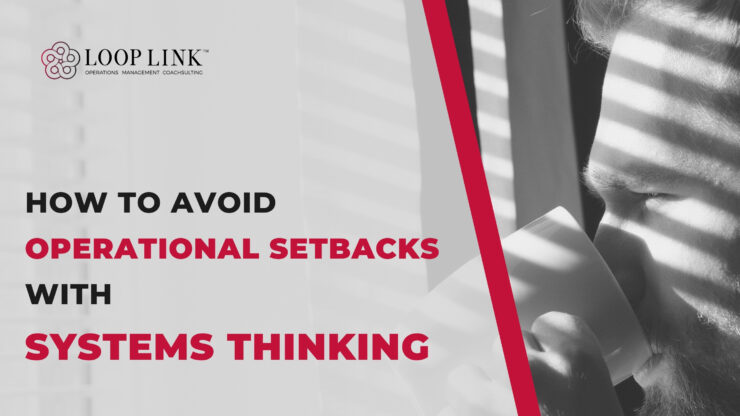The way we think as CEOs and agency owners can have a profound impact on many aspects of our business. We know this, of course, because business magazines and industry thought leaders continuously speak about the importance of our “mindset”— but do we actually know how we think?
While reminders to remain positive and view problems as opportunities are certainly needed, they don’t give us a concrete method by which we can model our cognitive processes. Instead, they are simply short-lived tips.
This is where learning about systems thinking can be beneficial. Unlike the vast number of entrepreneurial mindset tips that can be found online, systems thinking isn’t a single tweak or modification. It’s a perspective that results in better problem-solving and increased efficiency. One that can help us sidestep a wide spectrum of issues (if we successfully make the shift).
What is Systems Thinking?

As superbly defined by WhatIs.com, systems thinking is a holistic approach to analysis that focuses on the way a system’s constituent parts interrelate and how systems work over time and within the context of larger systems.
Or, simply put, it’s the practice of seeing problems as complex, multidimensional challenges with many components.
Systems Thinking VS Linear Thinking
Before making the shift to systems thinking, many of us approach life with a linear perspective, as this is somewhat of a default setting for humans.
With linear thinking, we view problems as equations that can only be solved using the same step-by-step process. We tend to view every challenge with an identical (or extremely similar) perspective, and expect to be able to fix any issue by using the one procedure or approach we are most familiar with.
How to Use Systems Thinking to Avoid Operational Setbacks
There are many reasons to use systems thinking in business, but one of the most beneficial is to prevent performance mishaps.
Here are a few examples of how this can be accomplished:
1. Strengthen Your Sense of Purpose
When we use systems thinking in business we are able to see the full impact of our “why”. We understand that each action or initiative is part of the difference we make on a daily basis. This allows us to make changes and eliminate activities that are not directly connected to our mission, vision, and values.
For example: If you are using linear thinking and you notice your team members are no longer feeling inspired in their roles, you might plan an employee appreciation day and expect it to reignite morale. With systems thinking, however, you’d take a closer look at what factors are contributing to low motivation and the various consequences of an uninspired team. From there, you’d develop a strategy to address each factor and a plan to monitor team engagement for the next three months (with engagement being one of your core values).
2. Fix Feedback Problems
When we consider “Why is systems thinking important?”, this is one of the shining examples. Feedback is an integral part of any successful business operation. We need to be able to effectively gather the thoughts and observations of our team members as agency owners and CEOs. Otherwise, we’ll never have a full understanding of how our workflows and strategies are panning out. And, unfortunately, when we rely on linear thinking to address this issue, it can make matters worse as opposed to better.
For example: With linear thinking, we view an issue with our internal communications as far simpler to resolve than it actually is. We may ask a particular team member to provide us with an update at predetermined project milestones, only to later realize that the team member is unable to provide comprehensive updates because of delays in the transfer of information from other employees. By taking a systems thinking approach, however, we would look at communication practices both within teams and across departments. We would then identify the most prioritized bottlenecks and develop strategies for each barrier in efficiency.
3. Identify HR Gaps Before Hiring
This is another noteworthy example of the value of systems thinking for CEOs and an excellent way to implement it. Who we hire (and when) has the potential to make or break our business. We must ensure our decision to expand our workforce supports our higher goals and objectives.
With systems thinking, we are able to look at each position as part of a bigger picture. We look at the gaps in our operational performance, the potential for revenue generation, and the negative impact on our quality of service, and use our findings to make informed, strategic hiring decisions.
For example: From a linear perspective, we might assume we need to hire more delivery drivers because our current drivers are not able to keep up with demand. But when we use systems thinking, we might look at how delivery calls are being dispatched and organized and see that we can increase the efficiency of how routes are being planned. Next, we might incentivize our drivers to take additional calls and offer training to our dispatchers to ensure they are aware of scheduling best practices.
Your Move
Now that we’ve discussed how to use systems thinking to avoid operational setbacks, there’s just one thing left for you to do— assess your own operational performance. Ask yourself, “Where are the setbacks within my business?” and then use systems thinking when seeking solutions. Remember, every aspect of your business is connected and has far-reaching impacts.
Come over to our Free Exclusive Community where you can find support from other CEOs on the same journey.





